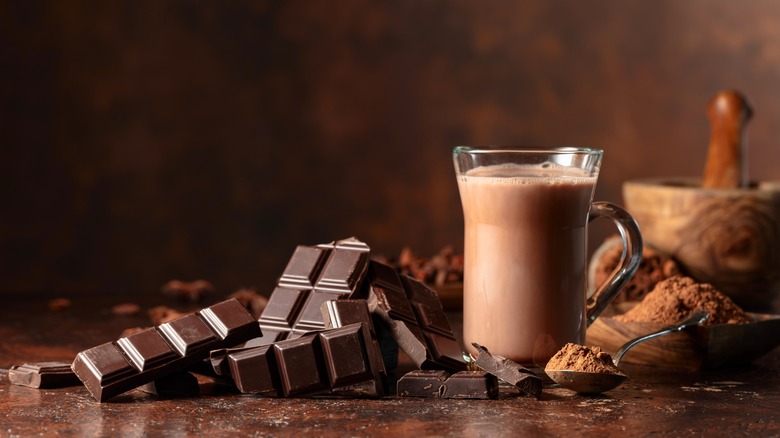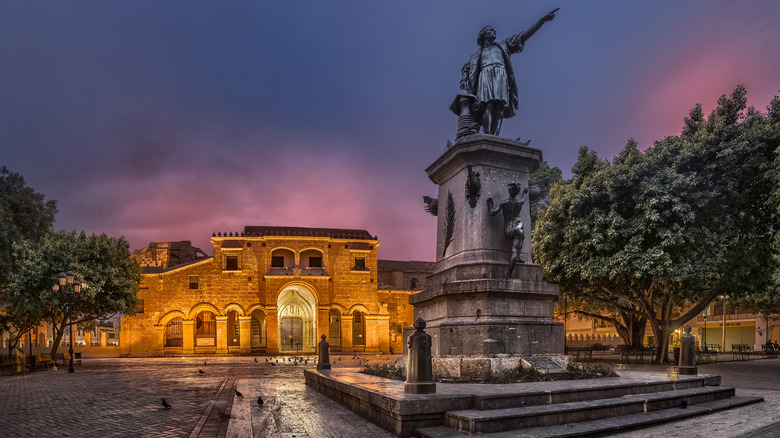The Origin Of Chocolate Milk Goes Back Further Than You'd Think
Chocolate milk is big business in the U.S., and it feels like a distinctly American creation. However, the world knows about chocolate milk because of its connection to the Caribbean. The commonly told narrative proclaims Irish scientist and doctor Sir Hans Sloane as chocolate milk's inventor in the late 1680s, upon visiting one of his patients in Jamaica. Like most historical tales of intercontinental exploration, though, the real story is a bit more complicated.
Sir Hans Sloane was already a renowned physician by his twenties, and as such was appointed by England's Royal Society to attend to Jamaica's then-governor. Sloane stayed in the region for 15 months, documenting the local plants and wildlife alongside his medical duties. Jamaicans had access to cacao beans, and already knew to mix it with water to make drinking chocolate — itself a beverage with traditions going all the way back to Mayan-era Mexico. Sloane didn't enjoy cocoa, but made it more suited to his tastes by adding milk to it. He then brought word of his modifications back to England. Sloane's recipe was used by several enterprising chocolatiers, including the Cadbury brothers, who went on to become the UK's preeminent chocolate sellers.
Basically, Sir Hans Sloane "invented" not much more than a recipe swap here. (At least he has the founding of The British Museum to fall back on.) But did he even invent that swap? Historians note that chocolate milk in Jamaica can be traced to 1494. Sloane simply spread the word about a delicious drink to a wider audience.
Christopher Columbus brought milk to the Caribbean
Indigenous peoples in the Caribbean grew cacao thanks to word spreading of how ancient Mesoamerican cultures transformed it into consumable chocolate. Spanish explorer Hernàn Cortes, eager to capitalize on the growing appetite for cacao beans across Europe, spurred production of the crop across both the Caribbean and Mexico. Cacao production in the islands, originally enabled via plantations and forced labor, evolved into a Caribbean industry that continues to this day.
When Christopher Columbus first landed in the Caribbean in 1492, he thought he'd made landfall in Asia, as he was attempting to navigate an easier path there to assist in the burgeoning spice trade. He ended up exploring the various Caribbean islands over five months, and returned in 1493, bringing the first cattle to the region with him. The animals quickly thrived there, starting on the island of Hispaniola. Milk consumption increased as the Europeans spread their dietary habits across the Caribbean.

